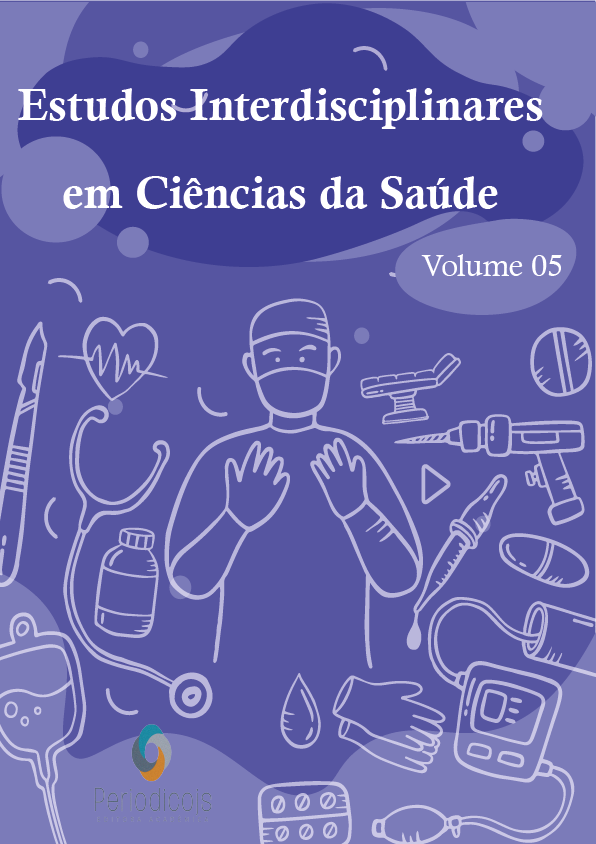Abstract
Introduction: Cryptococcosis is an infectious fungal disease caused by the yeast of the genus Cryptococcus, mainly Cryptococcus neoformans. It is characterized by being opportunistic and systemic, potentially fatal, which affects humans and some wild and domestic animals, presenting as reservoirs the feces of birds, mainly pigeons, acquired by the inhalation of fungal spores. Yeasts inhaled from the environment can settle in the lung and increase its polysaccharide capsule to inhibit phagocytosis and opsonization, causing symptoms ranging from fever and cough to serious conditions such as meningitis. Objectives: To describe the clinical and radiographic aspects of pulmonary cryptococcosis in immunocompromised patients. Methods: Qualitative literature review, based on exploratory readings of articles in the Scielo and Google Scholar databases. Results: Pulmonary cryptococcosis is the second most frequent form of the disease, often seen in immunocompromised hosts, with a wide variety of radiological abnormalities. The lungs can be localized or disseminated. Pulmonary manifestations can vary between asymptomatic and symptomatic infection, the latter presenting with an infectious condition such as fever, cough, chest pain, weight loss, purulent sputum and respiratory failure. Among the radiographic findings, solitary or multiple pulmonary nodules, lobar consolidation, cavity lesions, reticular or nodular infiltrate, increase in hilar or mediastinal lymph nodes, pleural effusion, linear opacities, septal thickening and endobronchial lesions predominate. In immunocompromised patients, cryptococcosis can be severe and rapidly progressive, requiring prolonged antifungal treatment. However, in immunocompetent patients, recovery occurs spontaneously, without the need for antifungal treatment. Conclusion: Since in isolated pulmonary cryptococcosis the clinical presentation is nonspecific and the radiological pattern is non-pathognomonic, it is important to clarify the differential diagnosis with other pulmonary mycoses and primary or metastatic lung neoplasms, allowing the early diagnosis of the disease, in order to prevent the development of serious conditions, which can lead patients to death.
References
BRASIL. Ministério da Saúde. Secretaria de Vigilância em Saúde. Departamento de Vigilância Epidemiológica, Coordenação geral de doenças transmissíveis, unidade de vigilância das doenças de transmissão respiratória e imunopreveníveis. Vigilância e Epidemiológica da Criptococose. Brasilia-DF, 2012
Silva ACG, Marchiori E, Souza Jr AS, Irion KL. Criptococose pulmonar: aspectos na tomografia computadorizada. Radiol Bras. 2003;36(5):277-82.
Moreira, T.A.; Ferreira, M.S.; Ribas, R.M.; Borges, A.S. Criptococose: estudo clínicoepidemiológico, laboratorial e das variedades do fungo em 96 pacientes. Revista da Sociedade Brasileira de Medicina Tropical 39(3): 255-258 ,2006
Drummond, E.D.; Reimão, J.Q.; Dias, A.L.T.; Siqueira, A.M. Comportamento de amostras ambientais e clínicas de Cryptococcus neoformans frente a fungicidas de uso agronômico e ao fluconazol. Revista Sociedade Brasileira Medicina Tropical vol.40 no. 2 Uberaba Mar./Apr. 2007
Gullo, F.P.; Almeida, A.M.F.; Santos, J.L.; Giannini, M.J.S.M. Novas alternativas terapêuticas para o tratamento da Criptococose: Análagos de Resveratrol e microRNAs. Programa de Pós Graduação em Biociências e Biotecnologia Aplicadas á Farmácia. Araraquara, 2016.

